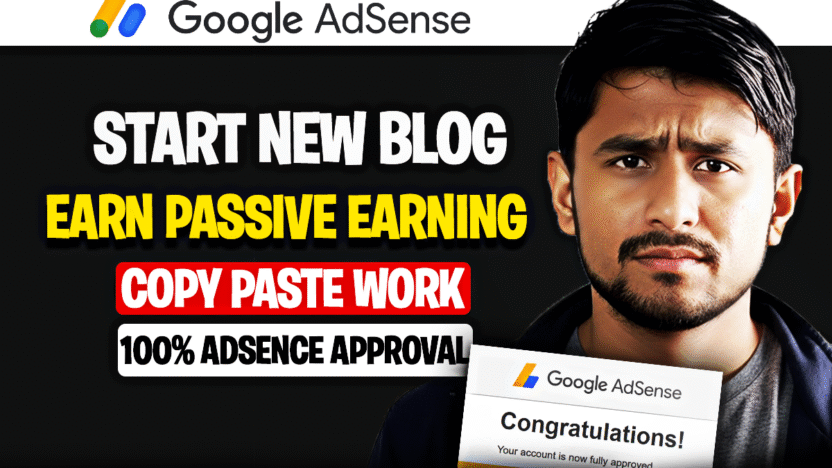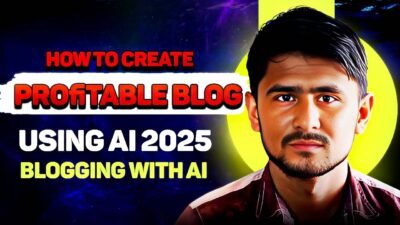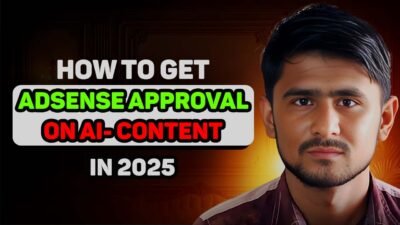Launch Your 1st Successful Blog in 2025
Starting a blog in 2025 is a step that can turn your passion into profit. This will help you build your expertise and connect with readers around the world. Whether you are dreaming of travel blogging, want to share your cooking recipes or want to grow your business through content marketing, this guide will help you step by step to start a successful blog.
In this guide, you will know how to launch a blog, which niche will be profitable, how to write engaging content and how to turn your writing into a sustainable income. Let’s start the blogging journey!
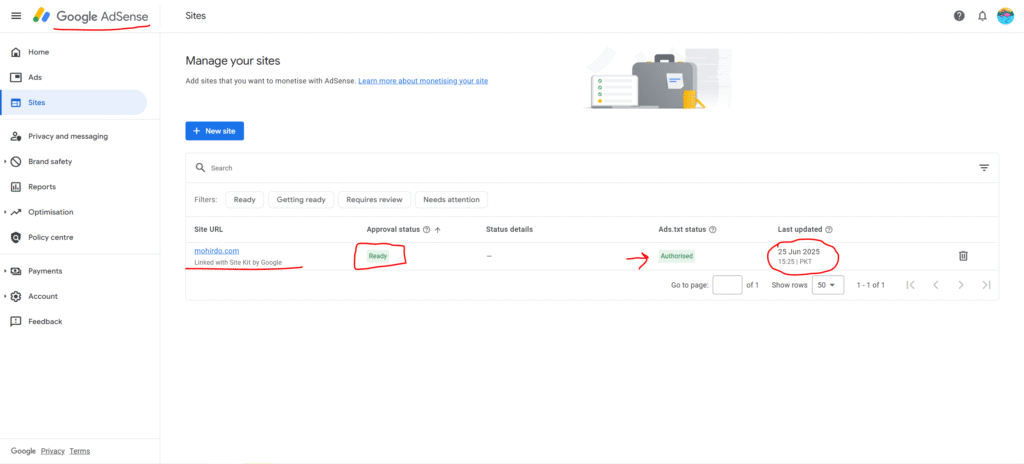
My website got approved by Google Adsense in 4 months, I regularly published high quality articles on MohiRDO.com website, applied for adsense, it took 24 days for approval and now I have started passive earning from my website.
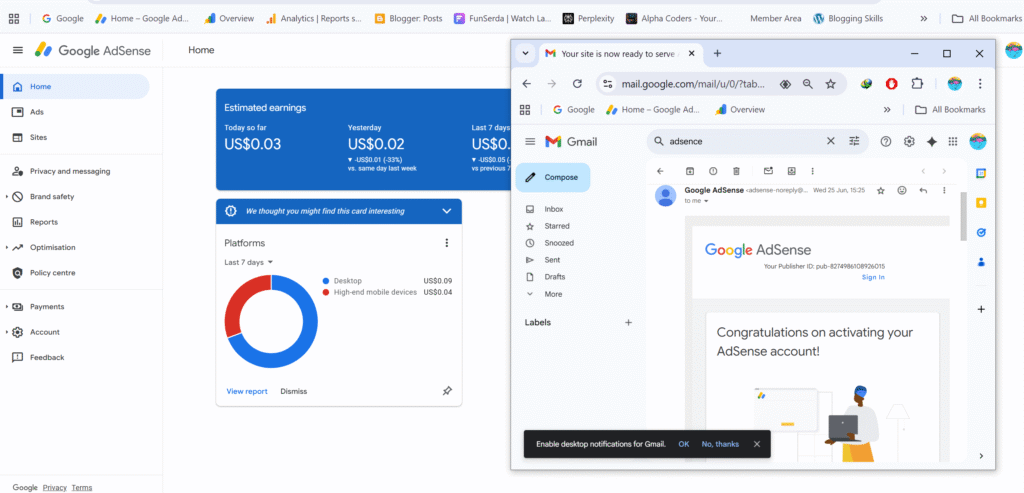
What is the Real Meaning of Blogging in 2025?
Blog is a kind of personal publishing platform where you share your valuable content with an online audience. Nowadays blogging is not limited to just personal diary, it has become a powerful tool in which people grow their business, build their authority and create multiple income streams with different monetization strategies.
I have learned from my experience that successful blogging is not just a matter of writing. It is mainly a process of understanding your audience, optimizing for search engines and providing consistent valuable content that solves people’s real problems.
Step 1: Choosing a Profitable Blog Niche
The first step is to choose the right niche, which is very important for the success of your blog. The niche should be where your passion, expertise and market demand come together.
There is a simple method for beginners:
- By listing your interests and expertise
- Market demand research through keyword tools
- By analyzing competition
- By checking monetization potential
Kuch Most Profitable Niches of 2025
- Personal Finance – monthly $5,000-$50,000+, medium-high difficulty, monetized by affiliate marketing, courses, consulting
- Health & Wellness – $2,000-$30,000+, medium difficulty, products, affiliate marketing, coaching
- Technology Reviews – $1,000-$25,000+, medium difficulty, affiliate marketing, sponsored content
- Food & Cooking – $1,000-$15,000+, low-medium difficulty, recipes, cookbooks, affiliate marketing
- Travel Blogging – $500-$20,000+, high difficulty, affiliate marketing, sponsored trips
An important tip is to choose a micro-niche within a broad category. For example, instead of fitness, focus on “home workouts for busy parents” so that the competition is less and the targeted audience gets easily attracted.
Step 2: Selecting Your Blogging Platform
The blogging platform determines the growth and earning potential of your blog. The two most popular options are WordPress.org and Blogger.
In WordPress.org, you have to buy hosting which is $3-$10 per month, but customization is unlimited as a large collection of themes and plugins is available. Monetization also comes with full control and advanced plugins are available for SEO. It is scalable, meaning you can easily grow from a simple blog to a complex website.
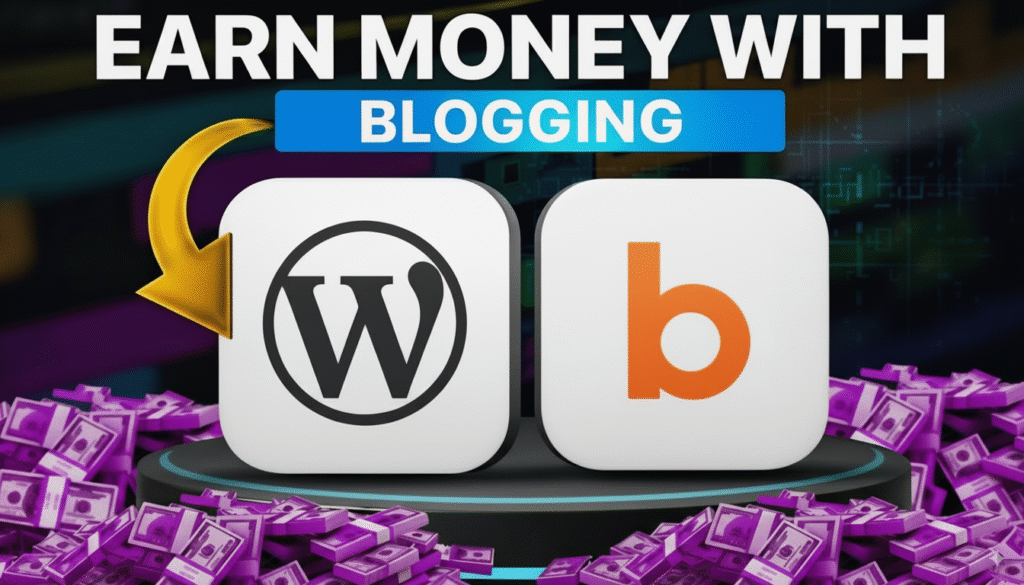
Blogger is free, but templates are limited and monetization is mainly limited to Google AdSense only. SEO features are also basic and scaling options are not very strong.
If you want to get into blogging seriously, WordPress.org is the best option. It does cost a little, but the flexibility and earning potential make the investment worth it.
Step 3: Set Up the Foundation of Your Blog
Now that you have decided on the platform, the next step is to buy hosting and domain. For beginners, there are some reliable hosting providers like:
- Hostinger – with budget-friendly and useful features
- Bluehost – for WordPress recommended and easy setup
- SiteGround – for fast speed and best customer support
The domain name should be simple and memorable. If possible, use your main keyword. The .com extension gives credibility, and avoid hyphens or numbers.
Installing WordPress is easy as most hosting providers now offer one-click installation. The first thing to do after installation is:
- Install a professional theme
- Configure basic settings
- Set up security
- Install necessary plugins
An important tip is to choose a mobile responsive theme, because today more than 60% of traffic comes from mobile.
Step 4: Essential Setup Elements of Blog
How to Create Legal Pages for Your Website Using AI Tools
Every professional blog should have some important pages like:
- Homepage where there is clear value and navigation
- About page which has your story and credibility
- Contact page where readers can easily reach you
- Privacy policy which is a legal requirement and is also necessary for monetization
- Terms of service which protects your content
WordPress has some must-have plugins:
- Yoast SEO or AIOSEO – for SEO
- Akismet – for spam protection
- UpdraftPlus – for regular backups
- MonsterInsights – for Google Analytics integration
And remember one tip – do not install more plugins than necessary. Keep only essential plugins so that site speed and security remains good, because too many plugins slow down the website.
Step 5: Master SEO for Bloggers
If you want success in blogging, it is very important to understand SEO. The first step is keyword research. Beginners make a common mistake that they target high competition keywords and then the results are slow. Instead, choose long-tail keywords.
Long-tail strategy means targeting phrases with 3-4 words in which the competition is low. Focus on question-based keywords like “best hosting for beginners” or “how to start a cooking blog.” You can use tools like Keywords Everywhere or Google Keyword Planner. For new blogs, it is best to target keyword difficulty less than 30.
Some things are very important in on-page SEO:
- The primary keyword in the title tag should be within the first 60 characters.
- The meta description should be short and engaging (around 150 characters).
- Use the proper structure of headings – H1, H2, H3.
- Do internal linking so that related content is connected to each other.
- Compress images and add alt text which is descriptive.
A useful tip – Prepare your title tag and meta description before writing the content. This will keep your article focused on the search intent.
Step 6: Create High-Quality Blog Content
Blogging is not about writing randomly, content should be written after planning. A strong hack for beginners is to create an editorial calendar – keep a content plan of at least 3 months.
How to Write an Article That Ranks on Google with AI
Keep these points in mind while planning:
- Seasonal content – like posts related to the time of festivals and events.
- Evergreen content – which is always relevant, like “how to start a blog.”
- Trending topics – cover current updates in your niche.
- Problem-solving articles – solve real issues of your audience.
The first blog post matters a lot, because it gives readers an idea of your style. Don’t run after perfection, focus on giving genuine value.
A blog post structure that always works:
- Strong headline with keywords.
- Engaging intro that hooks the reader.
- Well-structured body with subheadings.
- Practical tips and actionable advice.
- Clear conclusion with next steps.
And another tip – use the “bucket brigade” technique, meaning write short catchy phrases that compel the reader to keep scrolling, like “But wait, there’s more” or “Here’s the best part.”
Step 7: Build Your Blog Audience
Getting traffic is not possible only with SEO, a multi-channel approach is a must.
For Organic Traffic
- Do SEO optimization for long-term.
- Do content marketing through valuable resources.
- Build an email list for a direct connection.
For Traffic from Social Media
- Pinterest is best for lifestyle and DIY content.
- Create Twitter threads, convert your blog content into short engaging threads.
- Share genuinely valuable content in Facebook groups.
- Take authentic participation on Reddit and forums.
Don’t just publish and then stop for content promotion. Do active promotion:
- Send email subscribers as soon as you publish the post.
- Share on all social media platforms.
- Collaborate with other bloggers.
- Submit on content aggregation sites.
- Create multiple content formats from a single post, like videos, infographics or social media snippets.
Step 8: Blog Monetization Strategies
Bloggers have many ways to generate income in 2025. The most common 5 revenue streams are:
How to Get Google AdSense Approval Fast
- Google AdSense – Usually takes 3-6 months to start earning income, can earn from $100 to $5,000+ per month, mainly best for high-traffic lifestyle blogs.
- Affiliate Marketing – Starts in 2-4 months, has potential of $500 to $50,000+ per month, perfect for product review blogs.
- Digital Products – Grows in 4-8 months, can earn from $1,000 to $100,000+ per month, very profitable for educational content creators.
- Sponsored Posts – Brands approach after 6-12 months, can earn from $100 to $10,000+ per post, best option for niche authority blogs.
- Consulting Services – can start in 1-3 months, can earn $100-$500+ per hour, perfect for professional expertise blogs.
I have learned from my experience that monetization should be planned from the beginning, not treated as an add-on later. Start building an email list right from the beginning and select earning methods according to your niche and audience.
Some Steps for Early Monetization
- Apply for AdSense when you have 10-20 quality posts on your blog.
- Join affiliate programs relevant to your niche.
- Create lead magnets for your email list.
- Network with brands for future sponsored content and partnerships.
Step 9: Common Beginner Mistakes to Avoid
New bloggers often make some mistakes that stop the growth of the blog.
Common Mistakes That Kill Blogs
- Targeting overly competitive keywords instead of long-tail.
- Not posting consistently and following an irregular schedule.
- Focusing only on traffic instead of building an engaged community.
- Ignoring email list building from the start.
- Using cheap or poor-quality hosting hurts speed and SEO.
Technical Mistakes to Avoid
- Not optimizing your website for mobile.
- Ignoring page loading speed.
- Using too many plugins that slow down your site.
- Not taking regular backups.
- Forgetting to submit an XML sitemap to Google.
Step 10: Advanced Growth Strategies
If you want your blog to be successful in the long term, building niche authority is a must.
Ways to Build Authority
- Write comprehensive guides that cover a topic in detail.
- Take interviews with industry experts and build connections.
- Guest post on established blogs in your niche.
- Participate in podcasts and online events.
- Generate backlinks through valuable content.
Strategies to Scale a Blog
- Hire virtual assistants for routine tasks.
- Convert your expertise into online courses.
- Launch membership communities for recurring revenue.
- Develop multiple income streams to reduce risk.
- Build email funnels for automation.
Essential Tools and Resources for Bloggers
Free Tools That Every Blogger Can Use
- Google Docs – for writing and collaboration
- Canva – for easy graphic design
- Unsplash – for free stock images
- Grammarly – for improving writing
- Google Search Console – for monitoring search performance
- Google Analytics – for tracking website traffic
- Keywords Everywhere – for basic keyword research
- Google PageSpeed Insights – for site speed optimization
Premium Tools Worth Investing In
- AIOSEO or Yoast SEO Premium – for advanced optimization
- SEMrush or Ahrefs – for in-depth SEO analysis
- Premium WordPress themes – for professional blog design
- Email marketing tools like AWeber, ConvertKit or MailChimp
- Social media schedulers like Buffer or Hootsuite
Creating Your 90-Day Blog Launch Plan
Month 1: Foundation Building
The main goal of the first month is to strengthen the foundation of the blog.
In Week 1-2, you have to choose your niche and validate its demand. Then buy hosting and domain, install WordPress, add essential plugins and select a good theme and customize it.
In Week 3-4, create essential pages like About, Contact and Privacy. Write and publish your first 3-5 blog posts. Set up Google Analytics and Search Console and start creating social media profiles from where you can get traffic.
Month 2: Content Creation and SEO
The focus of the second month is on content and SEO.
In Week 5-6, publish 4-6 more high-quality blog posts. Use internal linking, submit a sitemap to Google Search Console and start keyword research for future content.
Week 7-8: Create a lead magnet for your email list. Set up email marketing automation, start networking with other bloggers and optimize your existing content for SEO.
Month 3: Growth and Monetization
The main focus of the third month is growth and starting income.
Week 9-10: If traffic is good, apply for Google AdSense. Join affiliate programs for your niche, create a content promotion schedule and start guest posting outreach.
Week 11-12: Analyze your traffic and see which posts are performing best. Plan a content calendar for the next quarter, implement advanced SEO strategies, and launch the first experiments of monetization.
Frequently Asked Questions
How Much Money Do I Need to Start a Blog?
You can start a blog for just $36-$120 per year, which covers the cost of hosting and domain. Free platforms like Blogger are available, but for long-term growth WordPress.org is the best option.
How Long Does It Take to Make Money Blogging?
Normally bloggers start earning within 6-12 months, but with consistent effort significant income comes after 12-24 months. For early monetization affiliate marketing can also start within 2-3 months.
Do I Need Technical Skills to Start a Blog?
Absolutely not. Nowadays hosting providers offer one-click WordPress installation and professional designs are available with themes that do not require coding. Basic computer knowledge is enough to start a blog.
How Often Should I Publish New Blog Posts?
Consistency matters more than frequency. Start with 1-2 posts per week and maintain that schedule. Regular high-quality content is always better than a lot of random articles.
What’s the Difference Between WordPress.com and WordPress.org?
WordPress.com is a hosted service that is easy to setup but has limitations. WordPress.org is self-hosted, with full control and unlimited monetization options. If you want to get serious about blogging, choose WordPress.org.
How Do I Choose Blog Topics That Will Rank in Google?
Use keyword research tools and find long-tail keywords that have good search volume but low competition. Focus on specific questions that are real doubts of your audience.
Your Next Steps to Blogging Success
Starting a blog in 2025 is an amazing opportunity for personal branding, business growth and financial freedom. To be successful, you need to choose a focused niche, create valuable content consistently and implement proven SEO + monetization strategies.
Remember these important points:
- Quality in content is always more valuable than quantity
- Implement SEO early on
- Start email list building early on
- Patience and persistence are your biggest strengths
- Always keep learning and adapting
The blogging journey starts with a small step – choosing your niche and taking action. The Internet is waiting for your unique voice and valuable insights. Implement these strategies, be consistent and slowly your blog will transform from a simple website to a profitable online business that will serve your audience and achieve your goals.
And one more thing – don’t wait for perfection. Launch your blog, gain real experience and keep refining your strategy. The best time to start blogging was yesterday, the second best time is now.


